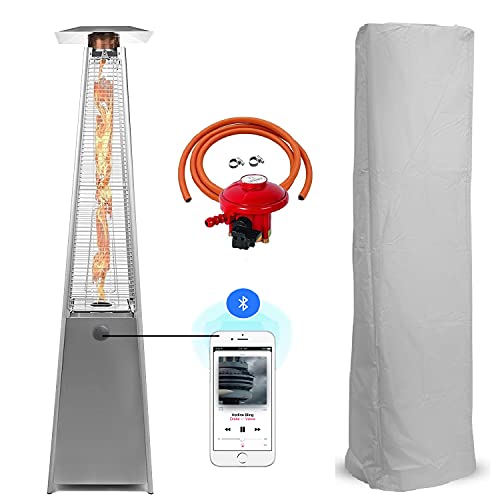Lowering the Price of Patio Gas
Patio gas is a type of gasoline liquefied (LPG) that is used in BBQs and patio heaters. It is available in small "patio' bottles that are compatible with regulators and are easily connected to your barbecue.
It has an extremely low boiling point, so it can be stored outside all year long, and it is very efficient in warm weather.
Cost of Gas
Patio gas is a type of propane or butane that is used to heat outdoor barbecues and outdoor heating. It is usually supplied in large bottles of propane or butane that has an adjustable regulator clip-on. This type of gas is cheaper than natural gas, which is delivered via pipes. However the cost of installing or replacing gas lines will be based on the material and the type of pipe.
Propane can also be bought in smaller cylinders, which are compatible with BBQs and patio heaters. These cylinders are filled by propane dealers in the majority of cases. They come with an adjustable screw-on or clip-on regulator with a diameter of 27mm.
Cost of Bottles
There are several ways you can reduce the cost of patio gas. First, make sure to buy your bottles in the early morning or late evening, when prices are generally lower. Also, make sure to pump your gas when it's cool; hot temperatures cause the gas to expand, and you'll pay less for fuel.
You can also save money by using recyclable bottles instead of plastic bottles. Some of the most popular choices are Glaceau Smartwater, which is well-known for its light weight and easy-to-drink flip cap as well as the Black Diamond Ultralight, which is beloved by thru-hikers for its slim shape and light, quick-to-refill design.
The 13kg Calor Patio (propane) gas tank is ideal for barbecues and patio heaters with four burners or more. The price includes both the cylinder as well as the valve. If you are buying your first cylinder and do not have the bottle to return, add EUR20.
Cost of Regulators
There are a variety of gas regulators that are suitable for use in patios. However, they are not all the same. You'll need a regulator compatible with the type of gas cylinder you're using. For example, a propane cylinder will have a specific type of valve while an ethane cylinder will have another. Both types of gas require different pressures to be released, therefore they can't be used interchangeably without swapping the regulator.
There are a variety of regulators, including screw-on and clip-on. Certain regulators include the pressure setting and sensor within the same body. Others are more intricate and can include a number of different components. The type of cylinder you're using will influence the cost of the regulator. There are different sizes available for the smallest bottles while larger cylinders cost more and require a bigger regulator. If your patio heater is powered by natural gas the cost of installing a new gas line will increase the overall installation price. You'll also have to include the cost of the general contractor, as well any inspection or permit fees that are required by the local jurisdiction.
Cost of Installation
The cost of installing gas for your patio is contingent on the system and the amount of pipe needed. For example, installing an entirely new gas line from the main line to the house is typically around $20 per linear foot. This price includes the cost of laying pipes and connect appliances to the line. It also covers the cost of building materials, such as copper and steel pipes, which are more expensive than plastic ones. You should expect to spend an additional $50 for an inspection of gas leaks.
You can purchase propane or butane gas in a tiny "patio bottle" which is designed with patio heaters and BBQs in mind. The design is compatible with gas regulators that connect to the BBQ's or patio heater's cylinder. Propane is orange-colored and Butane is blue, but both are equally effective for outdoor use. Calor sells propane, butane and patio gas LPG cylinders that come in different sizes. The bottles are not interchangeable. garden patio heater gas requires a specific gas regulator.
The gas regulator regulates the pressure at the point that gas is released from the cylinder. This is crucial because it prevents the gas from accumulating to dangerous levels and causing an explosion. Gas regulators are available in a variety of designs and sizes. These include clip-on and screw-on models. You'll require a separate regulator for your patio heater or BBQ because the cylinders use different amounts of gas and the pressure at which they release gas is different.
A gas regulator is a vital element in any gas appliance because it allows you to control the flow of gas and ensures that the system is safe for your use. The majority of regulators are screw-on connections, which makes it simple to connect the cylinder. You can purchase them at most hardware stores. However, you can rent a gas regulator from most rental companies for an hourly rate.
The cost to install gas lines is dependent on several factors, including the length and location of your pipe, the price of the materials and the complexity of the installation. Installing gas lines to grill, for example is typically priced between $20 and $25 per linear foot. This cost can increase when you're constructing an gazebo or pergola that requires anchor bolts to hold it in place. The cost of this project will increase due to the expense of trenching and excavating.

